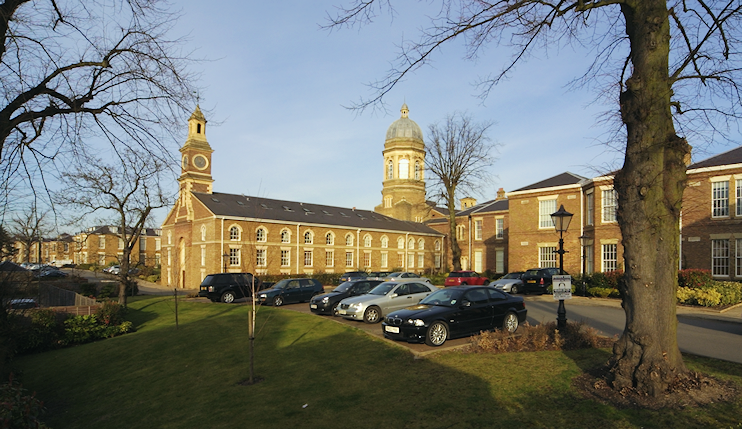Colney Hatch
Colney Hatch, Barnet
A recently transformed residential locality situated on the south side of Friern Barnet, formerly famous for its enormous mental hospital

Colney (nowadays pronounced ‘coney’) Hatch was a hamlet in 1409 and the hatch may have been a gate providing access to Hollick Wood. The first part of the name is unexplained but may be a family name from Colney in Hertfordshire.
The hamlet was focused on a crossroads – at the exact spot where the name ‘Friern Barnet’ is written on the map below. (Friern Barnet, meanwhile, was for most of its existence a manor without a settlement to its name, other than the manor house and its outbuildings, which stood in what is now Friary Park – near the top left corner of the map.) Hidden London therefore disagrees with the positioning of the ‘Colney Hatch’ name on the map, which is too far south, even acknowledging that settlement foci do often shift over time.
In 1831 Colney Hatch had 33 inhabited houses but the hamlet was soon to be overwhelmed when it was chosen as the site for the new Middlesex County lunatic asylum.
Built in 1851 in the style of an Italian monastery, Colney Hatch asylum had its own gasworks, shoemakers, brewery, bakery and farm and became the best-known institution of its kind in the London area – so much so that throughout Middlesex and beyond its name became synonymous with mental illness.† It was the largest mental hospital in Europe and at one time accommodated nearly 3,000 patients.
The planned construction of the neighbouring Great Northern Railway line was one reason for the choice of the site and Colney Hatch station was opened specifically to serve the asylum.
The old village expanded as a provider of goods and services for the asylum’s staff but the larger settlement that grew up to the east was named New Southgate out of a desire to avoid the negative connotations of Colney Hatch. The station’s name was later changed for the same reason and the asylum itself was renamed Friern mental hospital in 1937, and then simply Friern hospital in 1959.

The hospital closed in 1993 and a flock of developers descended on the site. Shown in the photographs above, the main building has been renamed Princess Park Manor and converted into 250 luxury apartments set in 30 acres of parkland. The hospital’s farmland has been laid out as Friern Village, a development of over 700 ‘executive homes’ and townhouses.
‘Colney Hatch’ was cockney rhyming slang for a match.
Postal district: N11
Website: Princess Park Manor (property developer’s site)
Further reading: Steve Emecz (editor), Princess Park Manor – A History, MX Publishing, 2016
and David Berguer, The Friern Hospital Story, Chaville Press, 2012
